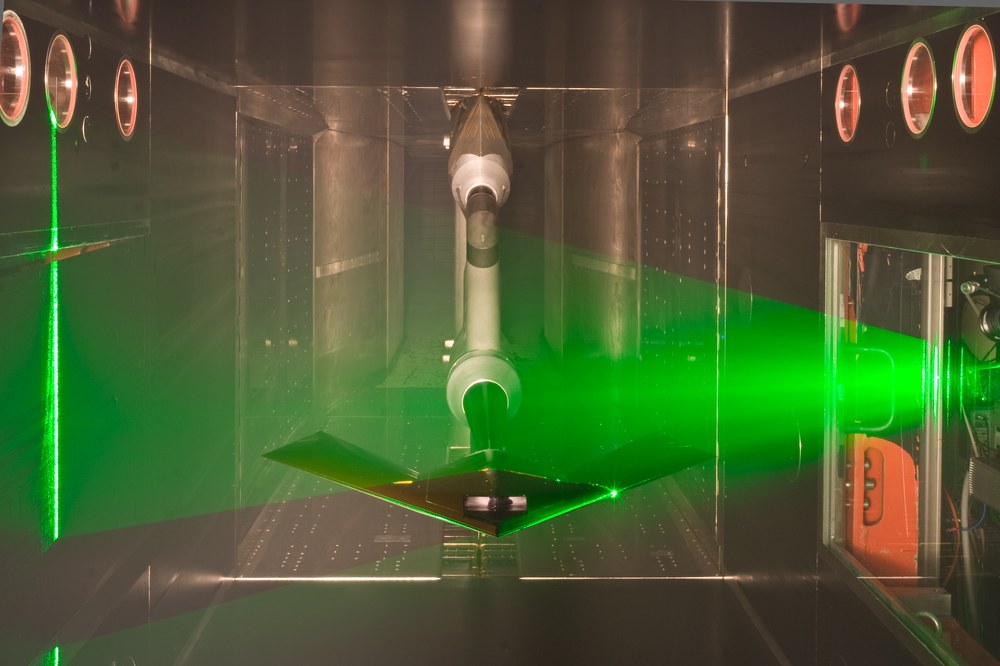High Speed Configurations Department

Aerodynamic research for next-generation high-speed air vehicles
In the department of High Speed Configurations, we investigate the aerodynamics of aircraft and missiles at transonic, supersonic and hypersonic flight speeds. We develop know-how and innovative technologies for future aircraft aiming to improve flight performance and to reduce polluting emissions.
Competencies
In high-speed flows, the compressibility of air is a dominant influencing factor that strongly affects the aerodynamic characteristics of high speed air vehicles. Research into this type of flows is an important basis for the development of future aircraft for high flight speeds.
Our research addresses the vortex and shock dominated aerodynamics of highly maneuverable aircraft and missiles as well as laminar and transitional flows around selected aircraft components such as wings or control surfaces. In doing so, we combine analytical, numerical and experimental methods - for example, in the analysis, prediction and control of compressible vortical flows over multi-swept delta wings, the complex flow through supersonic air intakes, or the effect of manufacturing-related surface irregularities on laminar wings. In the numerical analysis and detailed prediction of the predominantly unsteady flows, we use powerful flow solvers and develop simulation methods for specific problems, such as, for example, the stability analysis methods NOLOT and AHLNS for the laminar-turbulent boundary layer transition. At DLR Göttingen, we operate the Cryogenic Ludwieg Tube Wind Tunnel (KRG) for transonic experiments at flight-realistic Reynolds numbers and the Ludwieg Tube Wind Tunnel (RWG) for supersonic and hypersonic flows up to Mach 7. In Europe, these facilities are unique in terms of size and operational range. In combination with highly accurate short-duration measurement techniques and scale-resolving CFD simulation methods, they provide excellent conditions for research on future aircraft.
Main research topics
- Aerodynamics of highly maneuverable aircraft
- Vortex flow over (multi-swept) delta wing configurations
- Highly integrated air intakes
- Engine nozzles and thrust vector control
- Aerodynamics of missiles
- Shock boundary layer interaction in supersonic and hypersonic air intakes
- Methods for control of missiles at high angles of attack
- Prediction of thermal loads in hypersonic flight
- Laminar/turbulent transition of boundary layers
- Stability analysis of laminar boundary layers and transition prediction
- Effect of discrete and distributed surface irregularities
- AI-assisted transition prediction
- Flow control
- Drag reduction and gust load alleviation on transonic wings
- Reduction of shock-induced performance degradation of supersonic air intakes
- Reduction of disturbances in laminar boundary layers
- Measurement and testing techniques for high speed flows
- Quantitative infrared thermography
- Oil film interferometry
- Cryogenic hot-film and hot-wire anemometry
- Development of stability analysis tools
- NOLOT
- PSE 3D
- AHLNS
